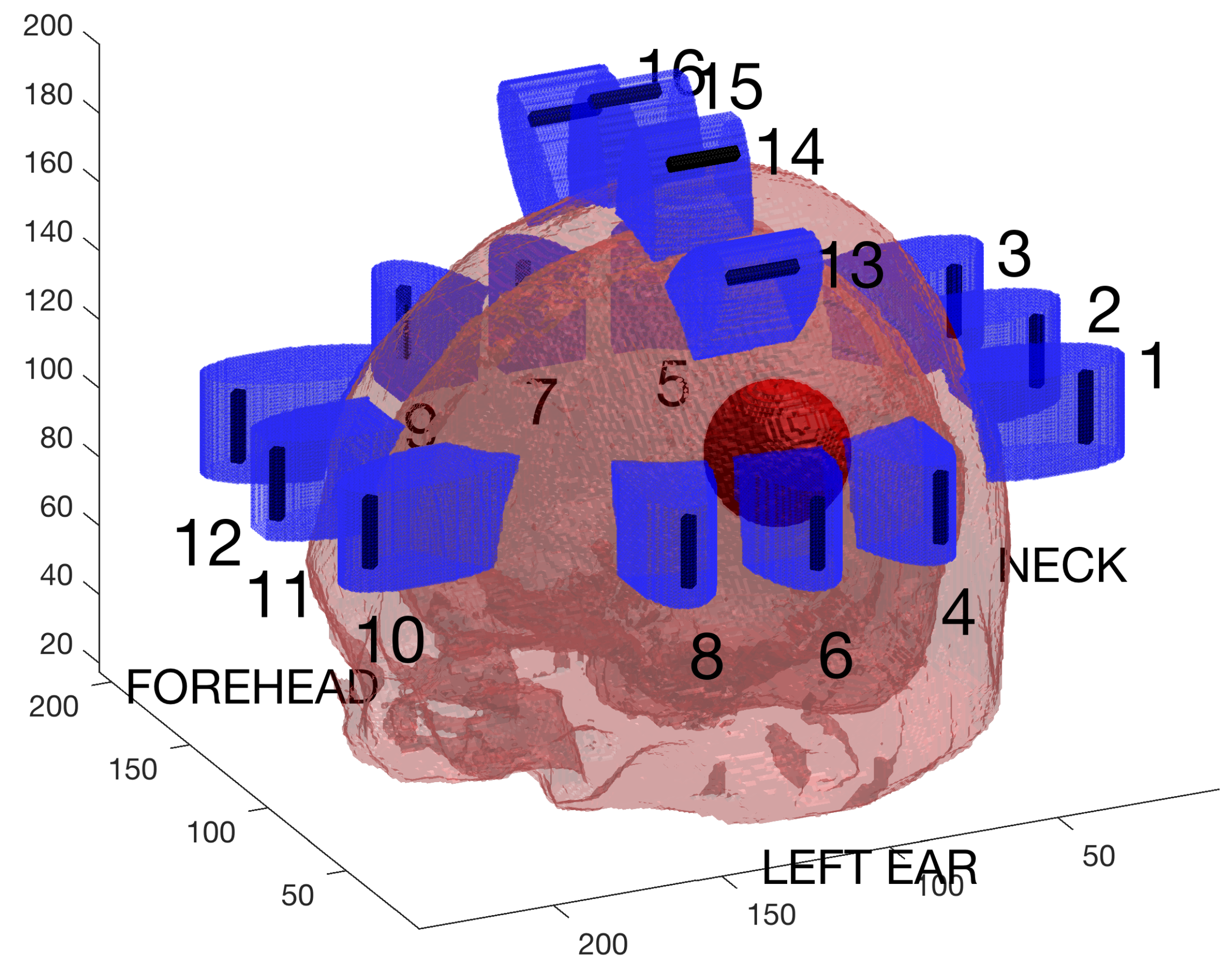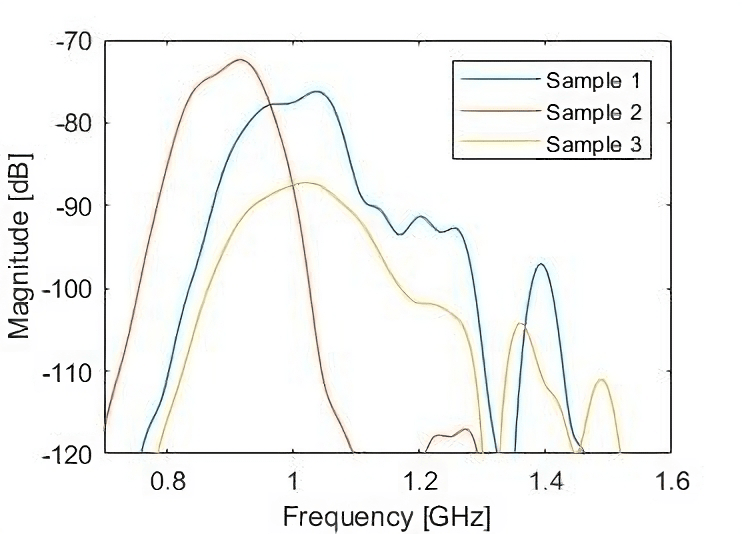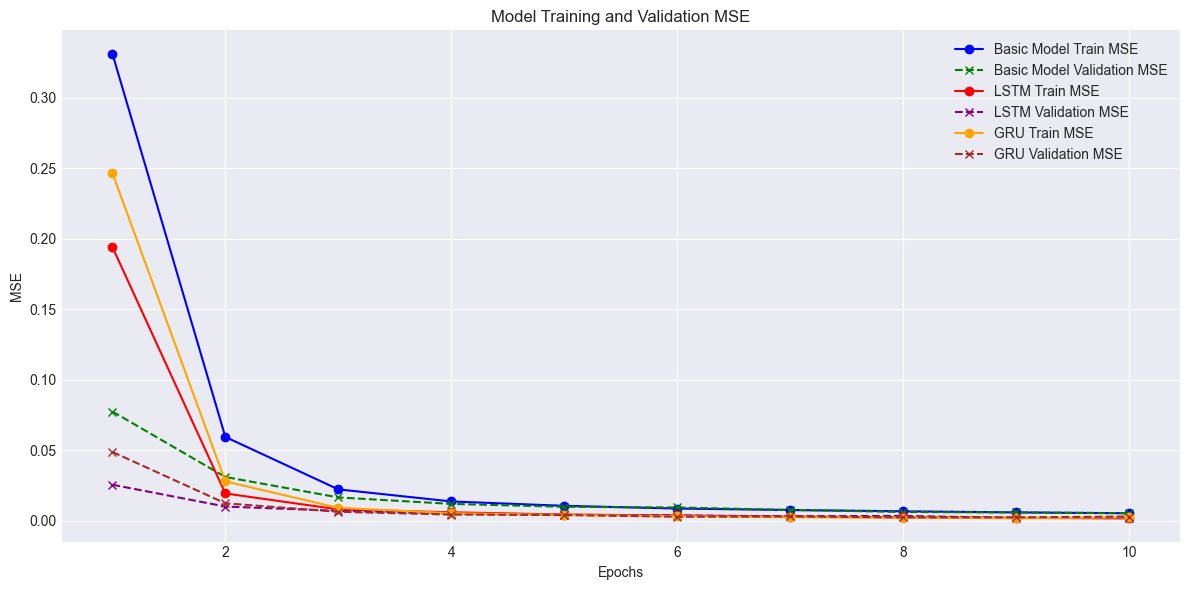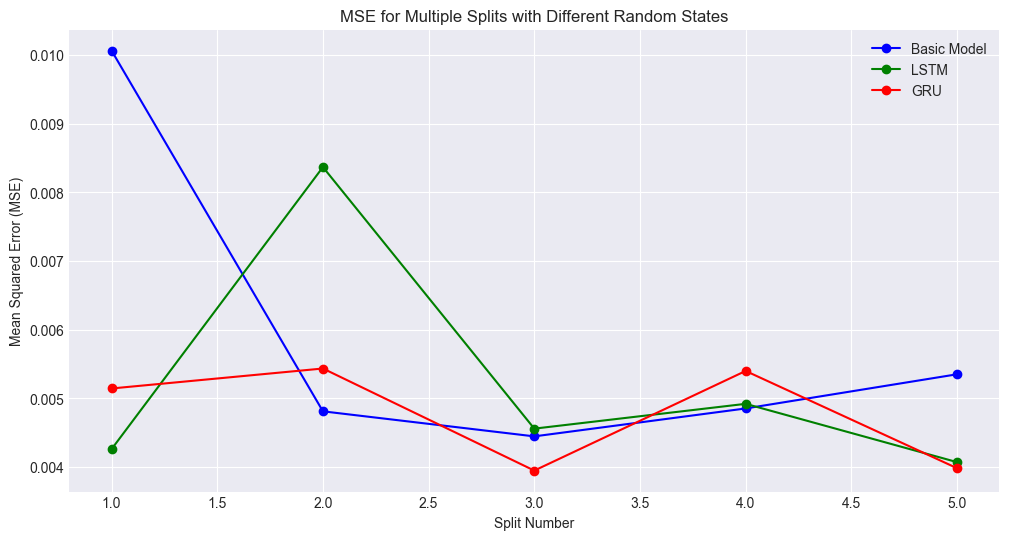Scattering-parameter-parameterization
Scattering Parameters Parameterization
Introduction
Research Focus:
- Inverse problem: given dataset $\rightarrow$ input parameters.
- Simulated microwave transmission data originally used to detect intracranial bleeding after trauma or stroke
 Sixteen antennas were placed around the head model used in the simulations.
Sixteen antennas were placed around the head model used in the simulations.
Dataset Description:
- Scattering parameters (S-parameters) for antenna pairs.
- 1000 pre-simulated healthy samples
- S-parameters from 16 antennas $\rightarrow$ 136 complex-valued curves.
- Antennas 2, 6, 7, 11, and 14 are utilized as amplitude components.

S-parameter $S_{26}$ representing coupling between antennas 2 & 6 for three samples from the dataset.
Input Parameters:
- Rescaling of head in the x, y, & z dimensions.
- Variation in hair layer thickness.
Method
Three Models Employed:
- Basic Feedforward Neural Network
- RNN incorporating a Long Short-Term Memory (LSTM)
- RNN incorporating a Gated Recurrent Unit (GRU)
Shared Network Settings:
- Data split: 80% training & 20% validation.
- Optimizer: Adam
- Loss function: mean squared error (MSE)
- Epochs: 10.
- Batch size: 32.
Multiple Train-Test Splits:
- Iterations: 5.
- Validation with Average MSE & standard deviation.
Results – Single Train-Test Splits
Example of Predicted & True Label of Different Models
| Label | X | Y | Z | Hair |
|---|---|---|---|---|
| Predicted Basic | 0.827 | 0.848 | 0.796 | 0.938 |
| Predicted LSTM | 0.840 | 0.837 | 0.814 | 1.094 |
| Predicted GRU | 0.862 | 0.812 | 0.852 | 0.973 |
| True | 0.844 | 0.851 | 0.834 | 1.0 |
 Training & Validation Results for Different Models
Training & Validation Results for Different Models
Certainly, here’s the information organized into tables:
Training & Validation Results for Different Models
| Metric | Basic | LSTM | GRU |
|---|---|---|---|
| Training – 1st Epoch | 0.3311 | 0.1941 | 0.2465 |
| Validation – 1st Epoch | 0.0774 | 0.0256 | 0.0488 |
| Training – 10th Epoch | 0.0053 | 0.0017 | 0.0024 |
| Validation – 10th Epoch | 0.0054 | 0.0019 | 0.0030 |
| Metric | Basic | LSTM | GRU |
|---|---|---|---|
| Average Euclidean Distance | 0.1219 | 0.0703 | 0.0925 |
Results – Multiple Train-Test Splits
 Validation of Multiple Train-Test Splits
Validation of Multiple Train-Test Splits
| Model | Average MSE for 5 Splits | Standard Deviation |
|---|---|---|
| Basic | 0.0059 | 0.0021 |
| LSTM | 0.0052 | 0.0016 |
| GRU | 0.0048 | 0.0007 |
- Final result: GRU outperforms LSTM and Basic Model
Prospective Research
- Utilize data from all 16 antennas.
- Dataset contains bleeding samples $\rightarrow$ incorporate these samples.
- Explore data augmentation & transformers.